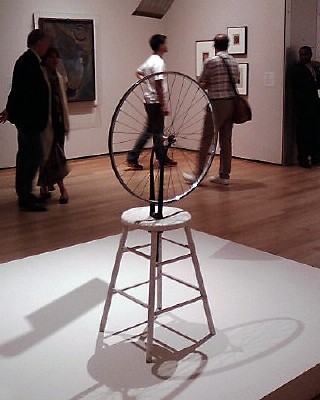
toutfait.com

Schippling 2010
"Say it’s not a Duchamp. Turn it over and it is."
Cage (1967)
"If ever there were a watershed -- some probably think of it more as a trough -- between the artistic past and whatever the present is turning out to be, it was Duchamp's snow shovel..."His Readymades asserted once and for all that the artist's decisions are the interesting thing in art. This could be the choice of subject, brush, color, and application -- the Line of the Artist -- in a painting, or the choice of an activity to perform, however minimal. In addition "The Large Glass" heralded the hegemony of personal iconography over classically recognized content. The former is, of course, present in earlier artwork but the order of precedence is now greatly reversed. These two moves combined to decisively shift the focus from the Hand to the Mind of the Artist.
Hamilton (1966a)
The "Bicycle Wheel", in its many re-productions, has taken its rightful place not only as the first Readymade, but as the very first Kinetic and Assemblage -- perhaps tied with Picasso's Guitar reliefs -- Sculpture all in one. It is the original piece of New Media. Since then, any work of assemblage, perhaps even any work using pre-manufactured materials, is a Readymade.
"Since the tubes of paint used by an artist are manufactured and ready made products we must conclude that all the paintings in the world are Readymades Aided and also works of assemblage."
Duchamp (1961a)
And any work which requires the artist's biography for explication -- "As a child [the artist] was set adrift in shark infested waters in a boat made of lard impregnated felt with an iPod containing one Michael Jackson album stuck on shuffle." -- owes its very life's blood to "The Large Glass".
In contemporary art, Duchamp is the air in which we swim. However, where much was said about the skill of the earlier Hand less critical attention is paid to the quality of the latter Mind.
"I realized very soon the danger of repeating indiscriminately this form of expression and decided to limit the production of Readymades to a small number yearly."
Duchamp (1961b)
So here we are and in order to proceed we should evaluate why.
In 2010 it began to dawn on me that I was recreating
the canonical Readymades in my own image.
Just in time for the 100th anniversary here is my project.
"Miss Dreier had insisted that, since it really wasn't a painting or a piece of sculpture,
it couldn't be hung on a wall or placed on a pedestal. And how right she was!
Even standing in the corner it wouldn't do, for then it suddenly became a shovel again."
Hamilton (1966b)
This is both a plan and a proposal. Some of the described works have been completed, and some may never be. As defined in the wiki article, Readymades come in different varieties:
"This choice was based on a reaction of visual indifference with at the same time a total absence of good or bad taste -- in fact a complete anesthesia."
Duchamp (1961c)
Additionally...
"After Duchamp everyone thinks that all one needs is an idea.Note: in making the following descriptions I am greatly indebted to the online thesis Unmaking the Museum, Seekamp (2004). Her scholarship tracing the origin and consequence of the many Readymade originals and reproductions is just incredible. For quick reference I have collapsed her work into a Chronological List of Readymades.
But, of course, one also needs to hang that idea from the ceiling."
Schippling (2015)

toutfait.com |

Schippling 2010 |
My belief is that Postmodern Art began with the "Bicycle Wheel", which was hidden from view as a studio amuse-bouche until G.H.Hamilton and K.Dreier produced the 1945 Yale show described in Hamilton (1966). The photo above is my own of the NYMoMA installation -- note the "Shovel" blade hanging Damocles-like over the head of white-tee-shirt-guy. It pictures what is likely a reMake of the original re-production since someone stole the wheel in the late 1990's (personal communication) .
"Stool" is both Kinetic and Interactive.
It hangs from the ceiling because I had more room up there.
It is {rectified} because the original was not
suspended from the ceiling.

toutfait.com |
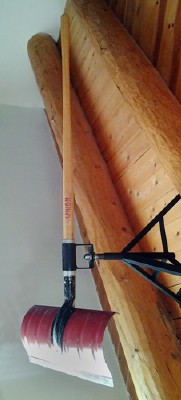
Schippling 2014 |
Translated literally as "In Advance of the Broken Arm" and generally called "[Snow] Shovel". It is the first fully American Readymade, selected in a New York City hardware shop and later inscribed by Duchamp. The original was lost and existing examples were re-produced twenty to forty years later.
The reMade translates figuratively as "Prelude to the breaking of a demi-bra".
My friend Jen moved into a new home and the previous tenants had left a snow shovel behind. As it was July she had no use for the shovel and asked if I wanted it for any reason. I immediately grasped the possibilities, rushed home, and made an adaptor kit to interchange it with the same ceiling-tripod as "Stool". This was my first inkling of the reMade project. Of course now I have "Stool" sitting in the way on the floor and risk performing Art->Not reassignment surgery on "Prelude" should I take it down and put it in a corner instead.
"The snow shovel, then, was the ultimate insult, far worse than the urinal or Mona Lisa's moustache. They were bad enough, but they only offended our prudery and our cult of the old masters, and that was part of the fun. The snow shovel has never been fun, or funny."
Hamilton (1966c)
But, spinning on the ceiling? This is fun n'est-ce pas?
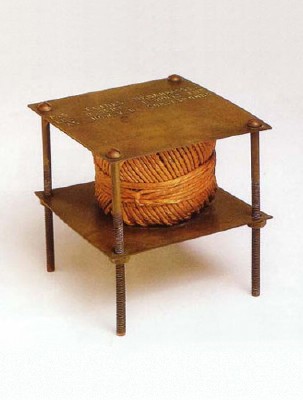
toutfait.com |
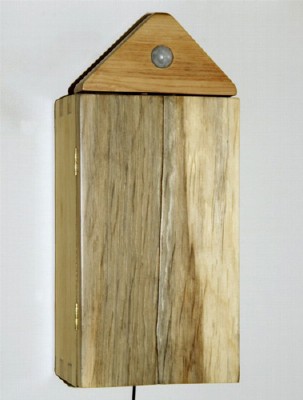
Schippling 2013 |
A box with sound. Of it's own making. The original is sometimes called "A Bruit Secret" which may refer to spreading rumors. It contains an unknown object which rattles when shaken.
"With Hidden Cricket" makes sounds when no one is moving in the room.
It was inspired by a real insect that hid out in
my bathroom and only chirped when I wasn't looking for it.
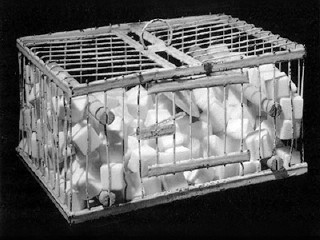
toutfait.com |

Schippling 2000 |
Perhaps pushing the analogy, but my first real Readymade response
was a set of heavily-hacked-porno prints from circa Y2K, named because
all the actors appear as if they are about to sneeze at the climatic moment.
The "Why Not Sneeze, Again?" project is to cut up the proof prints,
fold them into cubes, and store them in a cage.
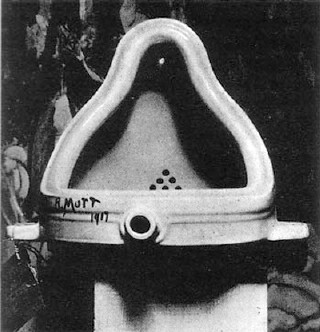
toutfait.com |
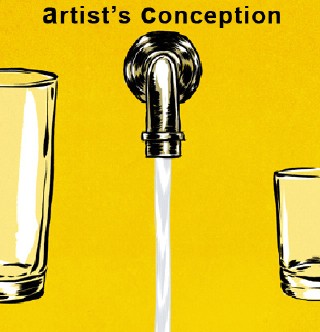
Schippling TBD |
The notorious icon rejected by the Society of Independent Artists. While the original was lost, its official portrait shown here was executed by none other than Alfred Stieglitz.
"Female Fountain" is a female urinal suspended
on an invisible pumping system.
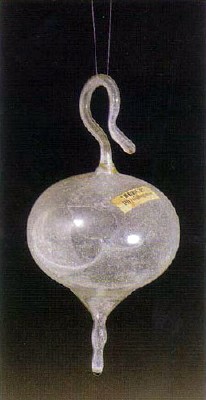
toutfait.com |
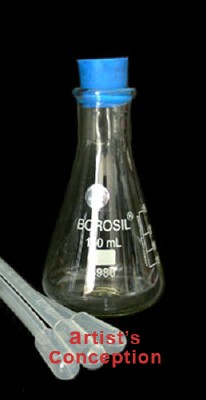
Schippling TBD |
Originally about 125cc of air captured in post-war Paris for Duchamp's patrons Walter and Louise Arensberg. Later reproductions reduced the volume to 50cc.
"My Dairy Air" is a labeled 150cc flask of air collected near a dairy farm.
An editioned set will be made available to discerning collectors.
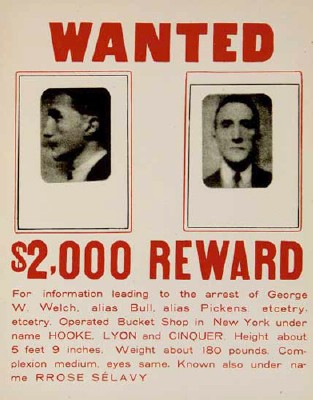
National Portrait Gallery |

Schippling TBD |
Duchamp made this wanted poster after finding a blank joke poster in a New York restaurant. It was later re-created and used as the flyer for his first retrospective show at the Pasadena Art Museum in 1963.
"It’s not the visual aspect of the Readymade that matters, it’s simply the fact that it exists."
Duchamp (1967)
For "DPC", I have always wanted to correct
the swinging benches at Santa Fe's
Railyard Park which are cabled to the ground such that they don't
really quite, satisfyingly, swing.
I will be waiting for the wanted poster after the execution.
Tee shirts will be made available in the gift shop,
and, hopefully, a program to fix
other pieces of contemporary public art will ensue.
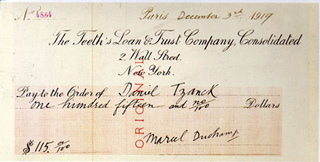
toutfait.com |
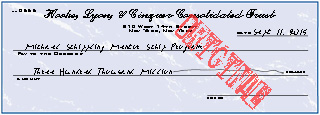
Schippling 2015 |
The original "Tzanck Check" is Duchamp's painstakingly hand made forgery of a real check made out to his dentist in payment for work done. Duchamp later repurchased the check for an undisclosed sum.
"MS MSP" is an imitation check written to fund a mentoring program in my name founded by a friend whom I once mentored. The program exists to assist said friend, on paper, in applying for teaching positions ...once his PhD dissertation is finally completed...
Numbered edition of two signed by the artist, both stamped "ORIGINAL".
In explanation I should like to mention that my mentor, Gordon Mumma,
was the producer of the 1968 Reunion performance
where John Cage played chess with Marcel Duchamp on a musically
enabled board. As such, Mumma wrote a check to Duchamp
to compensate him for his performance. The check was
cashed but never returned by the bank. So someone out
there has an original signed Duchamp that is not
listed in the Opera Omnia and these two "checks" may
someday fall into one or another like category.
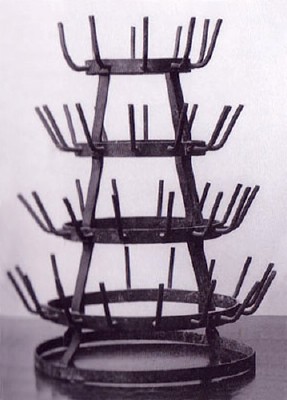
toutfait.com |
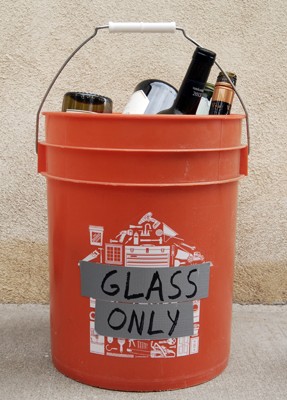
Schippling (2016) |
There is some controversy about "Bottle Rack" and other unassisted Readymades. Rather than merely selected they may have been manufactured to Duchamp's specifications, if not by the Man himself.
"When I actually counted the Bottlerack hooks (using Duchamp’s photograph of the “lost original”-a photo that scholars have noted has an incorrect and artificially-placed shadow), I observed that, as compared with his later reproductions, the tiers contain an odd number of hooks, asymmetrically distributed among the four quadrants in each tier of the rack (13, 10, 9, 9, 9, in the five tiers, respectively). Would such an asymmetry cause bottles placed on the hooks to topple the bottle dryer due to the unequal distribution of weight among the four quadrants or would the bottles overlap and therefore, make the rack not fully functional?"The author may be referring to a rack like this one, whose provenance is not specified, but she doesn't provide the image from which she made the count. However, unique or mundane, the idea and image of the "Bottle Rack" has taken on an artistic life of it's own.
Shearer (1997)
"In later years, to maintain this indifference despite their newly acquired fame, Duchamp -- always worried about the unavoidable aesthetics of patina -- thought of swapping them for newer mass-produced objects, replacing, for example, the Bottle Dryer with a plastic bucket."My reMade re-action is to re-chart the rack's course back to unassistedness in the guise of a simple bucket. The project is to find a suitable object without allowing aesthetics to intrude. It will appear to be a glass recycling bin during the course of the exhibition.
Girst (2003)

toutfait.com |
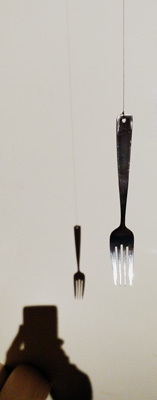
Schippling 2017 |
"Comb" is inscribed along the back edge:
3 ou 4 gouttes de hauteur n'ont rien a faire avec la sauvagerie; M.D. Feb. 17 1916 11 a.m.
(translated as)
Three or Four Drops of Height [Haughtiness] Have Nothing to Do with Savagery
"Fork" is hung by a thread and slowly lowered into the space. It is subtitled (with a tip of the hat to the Small Glass):
Being Dropped Once or Twice from a Great Height with One Eye Closed for Over an Hour
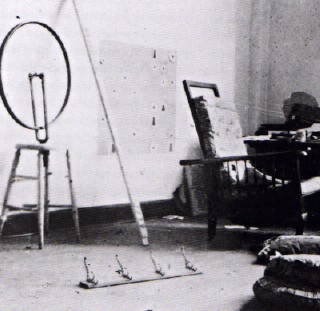
toutfait.com |
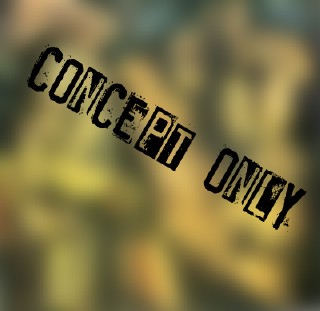
Schippling TBD |
AKA "Trap" or the "Coat Rack", this photo is (I think) from Duchamp's New York studio, taken by Henri Pierre Roche, c.1916-1918, and found here.
"KQN" is a trebuchet-like mechanism hidden in a corner which launches
nude novelty playing cards, Kings and Queens only, into the room
at a fairly slow pace. The cards will make a semblance of the 1912 painting
King and Queen surrounded by swift nudes
on the floor.
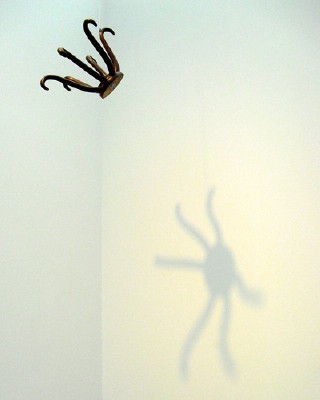
toutfait.com |
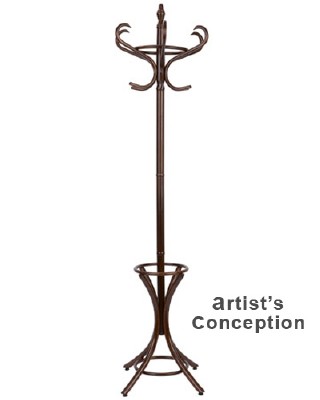
Schippling TBD |
"Porte Chapeau" was hung from the ceiling.
"Hat Rack" is a standard issue item
suspended just barely off the ground.
In a cross fertilization from the original "Trebuchet" it
is hidden in the gallery in plain sight.
It may even be used for visitors' coats and hats.
Edition of one, signed by the Artist.
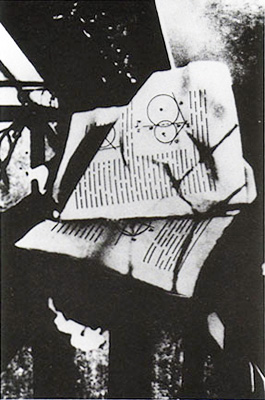
toutfait.com |
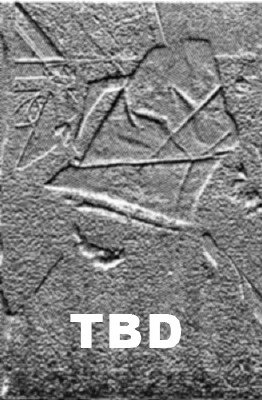
Schippling TBD |
The original was a wedding present from Duchamp to his sister Suzanne consisting of instructions for hanging a geometry textbook outside exposed to the elements. She executed the piece and made a painting of the results.
The reMade, "Between a Rock and a Hard Plate",
comprises two modern art classics,
The Tradition Of The New by Harold Rosenberg and
Art and Culture: Critical Essays by Clement Greenberg
sandwiched between a large rock and a heavy iron plate,
hanging from the ceiling, twisting in the breeze.
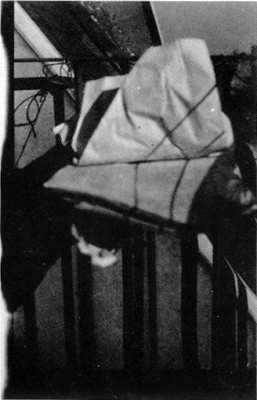
toutfait.com |
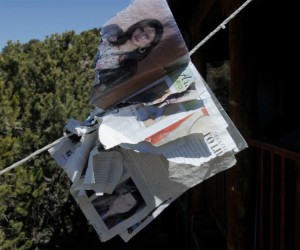
Schippling 2016-17 |
I (or the current occupant thereof) have been targeted to
receive a glossy quarterly
magazine entitled Fine Lifestyles that touts some of
the region's finest purveyors.
The content of this partcular issue infuriated me so much that
converting it to a reMade was just to good to pass up.
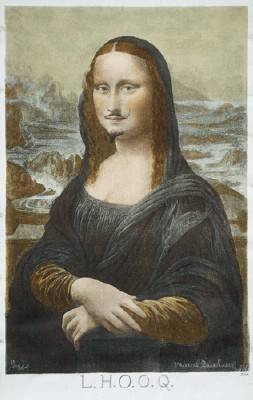
toutfait.com |
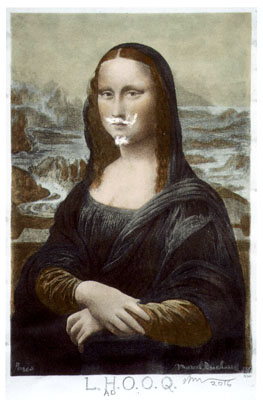
Schippling 2016 |
A sexist pun pronounced as "elle a chaud au cul" or "she's got a hot ass", perhaps first executed by Francis Picabia at Duchamp's instruction. This image can be found here and may be a later reproduction. A signed edition of 35 was made in 1964 with a slightly different moustache. And a further version, L.H.O.O.Q. Shaved, was made in 1965 using an unaltered playing card as a dinner invitation.
The project for "L.Had.O.O.Q." is to erase the moustache
and then explore the options for redrawing Rauschenberg's
"Erased de Kooning" at SFMoMA.
According to the Philadelphia Museum of Art, the original is 19x12cm
so that's about the size of this reMade as well.
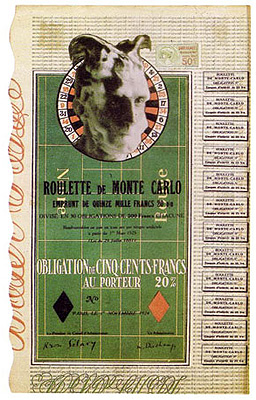
toutfait.com |
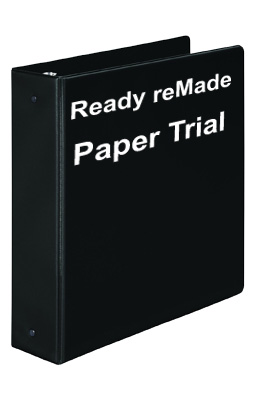
Schippling TBD |
Duchamp's original idea was to sell bonds to finance an, ultimately unsuccessful, gambling adventure.
In keeping with the randomized theme of the original, "Paper Trial"
is a binder containing all the significant versions of the present document
and communications pursuant to its publication or the production of a show.
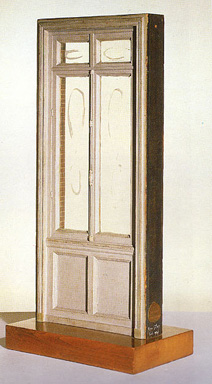
toutfait.com |
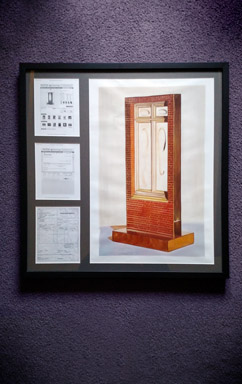
Schippling 2015-19 |
Constructed to Duchamp's specifications, this is perhaps, if it is even, the most obscure Readymade, ever. The title may refer to La Gare d'Austerlitz (a Parisian railroad station), La Bataille d'Austerlitz (a Napoleonic battle), or merely La Bagarre (a fight). Signed by Duchamp and Rrose Selavy -- who previously copyrighted "Fresh Widow" as well -- it creates much confusion in the ranks.
"Like Bagarre d'Austerlitz it [referring to Door, 11 rue Larrey] is a gesture that presents absence, but it does so by subtraction as opposed to the additive superimposition of that earlier work."
Naegele (2006)
I have seen no discussion of who might be responsible for the faux brickwork so it is (possibly) interesting to note that it may be one of the last actual paintings executed by Duchamp himself.
In researching this piece I discovered that anyone with an internet connection and a PayPal account can purchase a hand-painted reproduction of this work from Artisoo.com:
Our average artist is a university graduate with an advanced degree in art who, apart from working for our company, also develops his own portfolio of original art. The average age of our artists is 33. The youngest is just 27 years old and the oldest above 60. Our artists tend to specialize in a certain style or in works of a certain master - such as Vincent Van Gogh or Claude Monet, and as such we commission orders to the artist who is most likely to do the best job.
Arisoo (2015)
Since supporting (presumably) foreign artists is a
noble cause, my response here is to purchase a 13x20"
Chinese hand-painted copy of a somewhat bad photograph of a sculpture
with a faux-brick surface-treatment
that Duchamp hired a carpenter to construct, and
then to pay a professional framer to assemble the
painting with it's provenance documentation in order
to make the point of authorship clear.
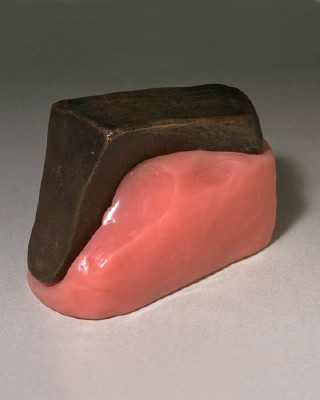
Tate Museum |
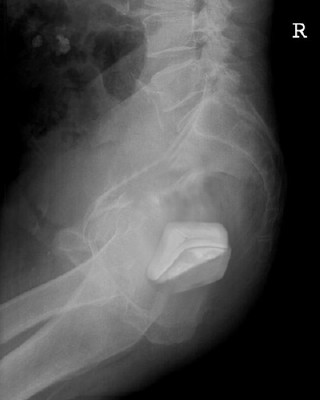
Schippling 2015 |
A performance which proposes to use the Duchamp original as a butt plug.
Basics: Unlike the vagina, which is closed off by the cervix, the rectum leads to the sigmoid colon. Objects that are inserted into the rectum can therefore potentially travel up into the bowel: the flared end on a butt plug exists to prevent this. Some dildos lack a flared end, and thus it is ill-advised to use such dildos anally since they may get stuck, requiring medical extraction.
(Wikipedia)
Caution is advised and this should not be executed by non-domain-experts.
The "Wedged" image is this artist's rendition of the results based on an x-ray
(from radiopaedia.org)
made prior to an aforementioned medical extraction.
But where are Karen Finley's acolytes when I need them?
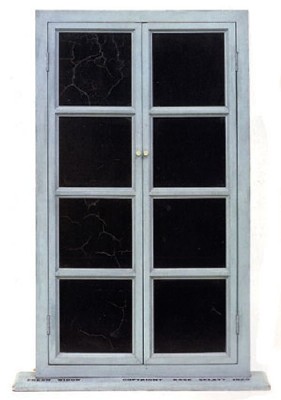
toutfait.com |
|
Given all the Russian Bride offers I receive initiating a new "Fresh Widow" should not be hard to accomplish. Arranging to die just at the end of the honeymoon period, with proper pre-nups in effect, might be more complicated. The question: Is this bad pun worth all the effort?
D'ailleurs, c'est toujours les autres qui meurent
Besides, it's always the others who die
(Duchamp's Epitaph)